Average sizes and life expectancy for this breed:
Afghan Hounds boast an appearance of elegance, strength, and agility thanks to their dramatic silky coats and tall, commanding gait. Over the years, Afghan hounds have become one of the most recognized breeds around the world.
One of the first Afghan hounds to appear in the United Kingdom was Zardin, who was imported from India in 1907. This dog won the Foreign Dogs class at the Crystal Palace for three years running. He also became the basis for the first UK standard for the breed. Since then, these dogs have remained popular for their dignified and noble aura, which has earned them the stature of “King of Dogs”.
These dogs originate from Afghanistan, where they were bred to withstand long hunts across cold mountainous terrain. Because of this, they need a lot of exercise and have a high prey drive. So, it’s best to keep your Afghan on a strong lead when outside. Otherwise, they may get distracted and dash off after a small animal or cat. However, with early training and socialization, Afghan Hounds make a great choice for families due to their clownish, self-confident natures and laid-back attitude to life.
See available puppies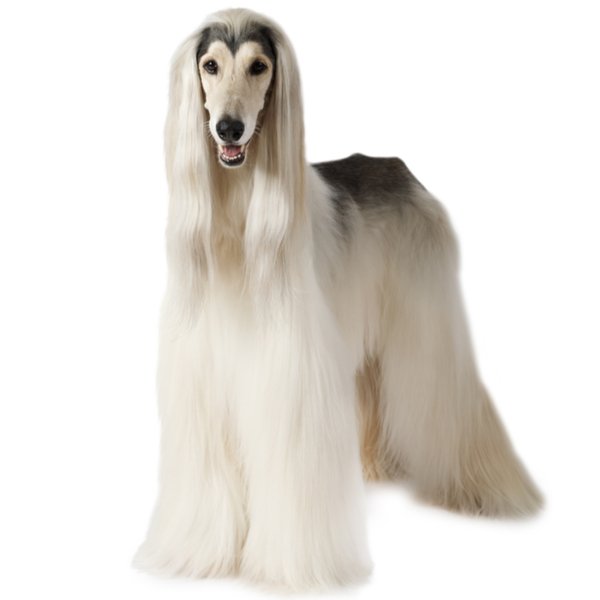

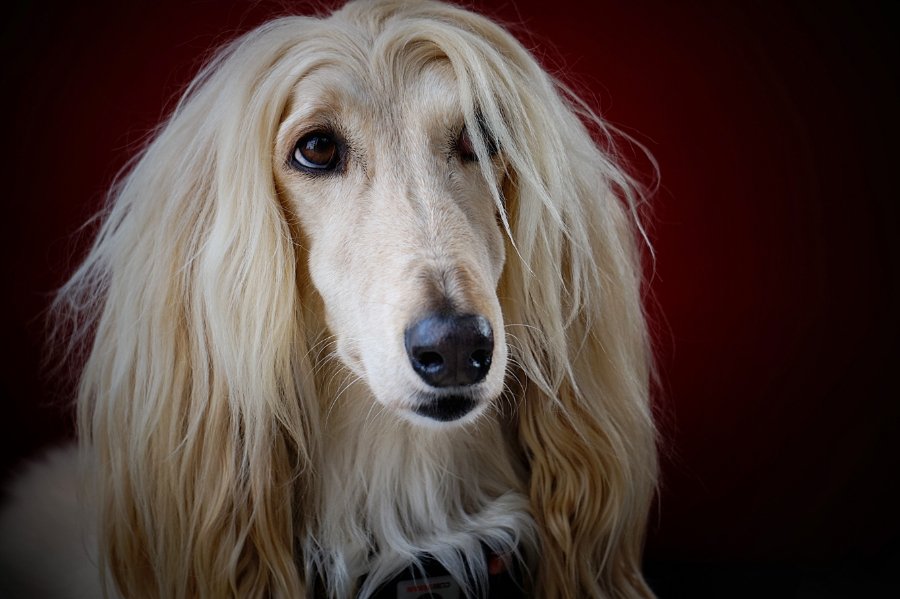


The Afghan Hound is believed to be over 4000 years old, making them one of the oldest dog breeds in the world. In fact, legend has it that these dogs were chosen to board Noah’s ark! However, Afghanistan's Islamic culture forbids the depiction of animals in art, so their exact origin remains a mystery. The only known early depiction of similar-looking dogs was a sketch drawn of a native soldier and his canine companion in 1813.
Afghan hounds are part of a group of sighthounds called ‘Eastern Greyhounds’. They are long-legged and were used by nomadic tribes to hunt down large prey in Afghanistan, such as gazelles and leopards.
These dogs were first brought to Europe and the UK in the late 1800s by soldiers returning from the Indian-Afghan border wars. Zardin was one of the very first Afghan hounds to be imported into England, where he created a big stir in the canine world after he won his first Foreign DogClass in 1909. Unfortunately, most of his descendants were thought to have died off during World War I.
It wasn’t until after the war that these dogs gained in popularity in the UK. In 1920, the first group of these dogs were imported. They were mostly light-coated dogs that became known as ' desert’ or named after their importer Bell Murray. Five years later, Mrs. Amps imported another group of individuals who were more compact and heavily coated. These dogs became known as the ‘Ghazni’ or ‘Mountain dogs'. For years. breeders debated over which type was correct. But inbreeding persisted and today’s Afghan hounds are believed to be a combination of both types.
The Afghan Hound Association was founded in 1927 by Mary Amps to register members of the ' Ghazni’ Afghan hound stock. However, as the different types were combined, the club came to represent the entire breed in 1931. The Afghan hound breed standard was established in 1948 and is still being used today.
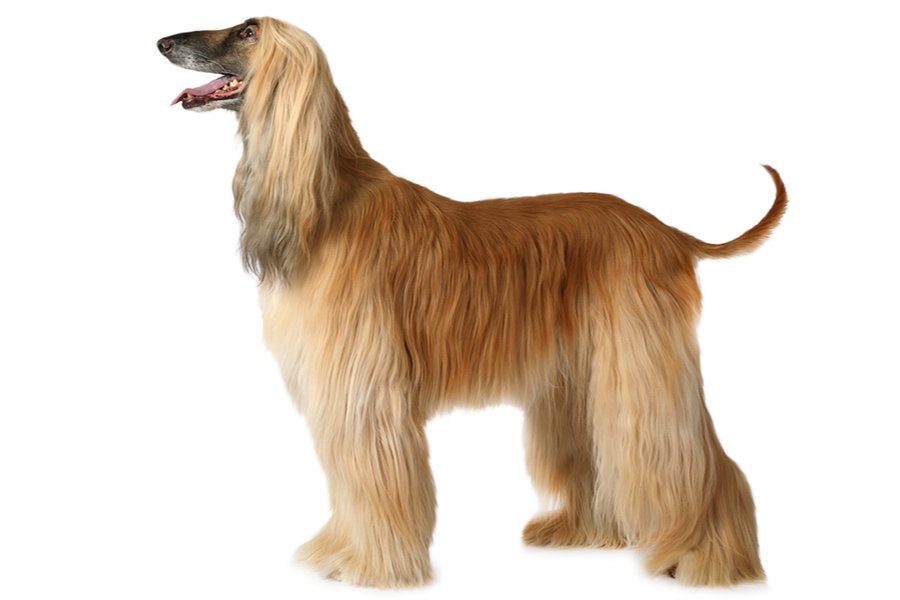
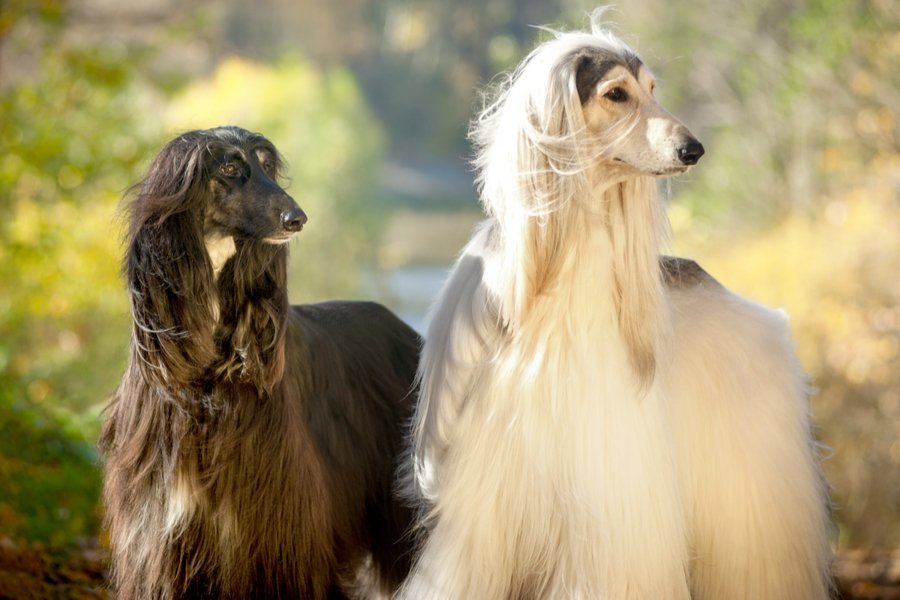
These sophisticated-looking dogs are unique in the dog world. They are dignified and elegant, but at the same time, powerful and proud, with long-arched necks, deep chests, and well-sprung rib cages.
The long head is never too narrow and has a prominent occiput. They have long forefaces and powerful jaws. Their long muzzles are darker in colour compared to the rest of their bodies. However, lighter-coated dogs often have liver-coloured noses that are also accepted under the breed standard.
Afghan Hounds have triangular-shaped eyes that are generally dark in colour and slanted slightly upwards. Their ears are set low and far back on the head, with a coating of silky, long hair.
Their shoulders are set well back on their forequarters, which are well-muscled and powerful. They also have well-developed and long straight front legs. The body is moderately long, with a level back that dips at the rear end. Afghan’s prominent hip bones are set wide apart on their well-muscled and powerful hindquarters. Their large feet with arched toes are covered with long hair. However, their back feet are not as wide as their front paws.
The Afghan hound’s tail is set low with a noticeable ring at the end. They carry it high when they are moving or excited, which enhances their proud look and appeal.
The Afghan Hound is covered in a thick layer of fine, long, luxurious hair that is soft to the touch. The hair on the forehead sweeps backward with a distinct ‘top knot’. A wide range of colors are accepted under the breed standard, including cream, red, black and tan, brindle, silver, and black. However, white markings on the head or collar are highly undesirable
Aghan hounds are known to be intelligent but they can be stubborn because of their independent and willful natures. However, it’s their gentle, friendly, and loving personalities that have seen them become popular family companions. Afghan Hounds are one of the sweetest dog breeds and they rarely show any sort of aggression or dominance.
Afghan Hounds are sensitive and very affectionate to their families. They can also be lazy and comical at times. It’s worth noting that these dogs have a high prey drive, so they are not best suited to homes with other smaller pets.
Because of their aloof demeanors, Afghan hounds need to be well-socialised from puppyhood by introducing them to a variety of people, animals, and new situations. They can be shy around strangers so regular interaction is essential.
These dogs may not be suitable for first-time dog owners because this is a high-maintenance breed that needs regular brushing, training, and lots of exercise. They fit in well with families that have secure gardens because they love to run around and play.
Afghan Hounds form deep bonds with their families. However, they are not known to suffer excessively from separation anxiety. As long as they are given plenty of exercise and mental stimulation, you can leave these dogs alone for short periods of time. Remember, these dogs were bred to hunt down prey for long periods, so keep their mind and body stimulated with a variety of puzzles, games, and interactions.
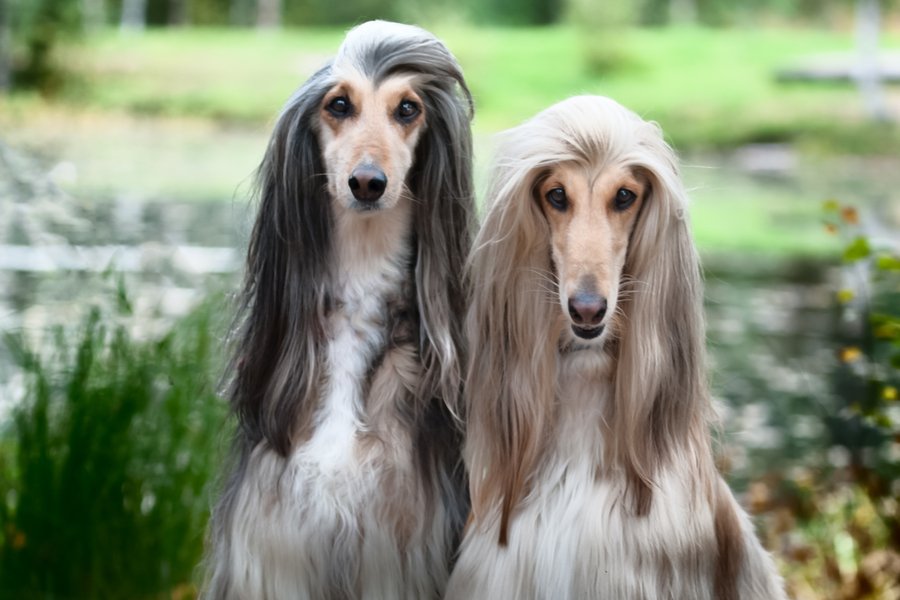
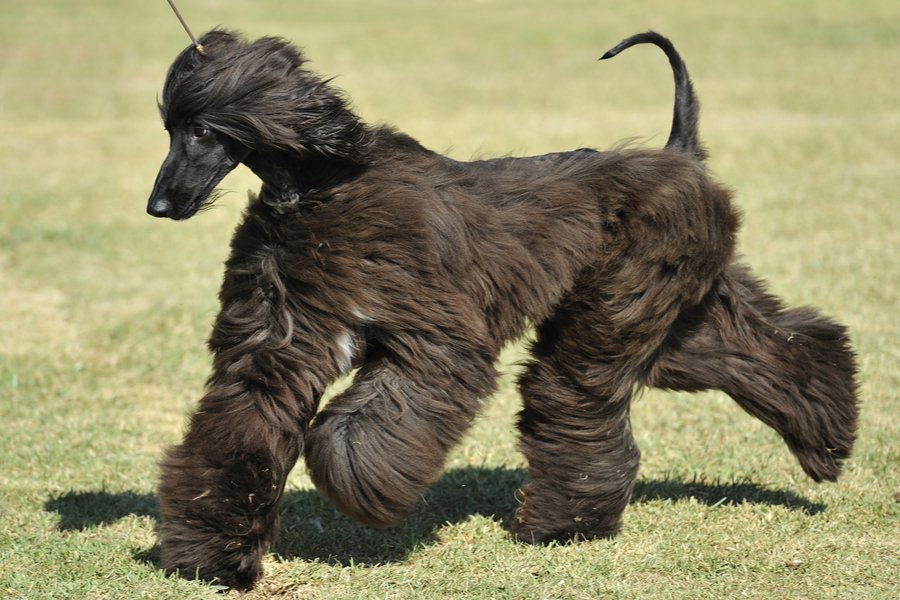
Afghan Hounds are known to be a bit stubborn when it comes to training. However, if you start early and remain consistent, then you will have a loving, obedient dog on your hands. If you are having trouble, consider seeking the advice of an experienced dog trainer who is familiar with the breed.
Aghan Hounds do not respond well to harsh correction or training methods. They are known to be very sensitive so positive reinforcement training is best. Start early and train your Afghan with patience and understanding. Rough correction and shouting will only cause them to become more timid. Respect training is much more important than obedience training with Afghan hounds. So, consider making training sessions fun and offer lots of rewards and praise to keep your puppy interested and engaged.
When it comes to house training, remember that Afghan puppies are known to have poor bladder control. So, don’t expect huge improvements until your puppy is at least 6 months of age.
Aghan hounds should ideally be brushed daily, or at least three times a week. This is important to help eliminate mats, debris, and tangles. So, make sure to have the time to do this regularly. You may also want to consider booking your Afghan hound in for regular trims at your local groomers.
Make sure every grooming session is a positive experience for your Afghan Hound. Show them with compliments and reward them for good behavior. This will make the whole procedure much more enjoyable for both you and your canine companion.
Bathing your Afghan Hound should be done once a week or so. You can also condition their coat after shampooing to retain its healthy sheen. Despite their long coats, Afghan hounds actually very minimally. Their hair is described as being human-like, so it simply just grows rather than regularly shedding. Because of this, these dogs are considered to be hypoallergenic. However, it's important to bear in mind that no breed is 100% hypoallergenic so exercise caution if you have an allergy
Brush your Afghan Hound’s teeth at least twice a week to eliminate bacteria and tartar buildup. Daily dental brushing is still the best way to avoid tooth and gum disease and bad breath. Use avet-approved toothpaste and a toothbrush to clean their teeth, tongue, gums, and mouth effectively.
Trim their nails once or twice a month to keep them healthy and in good condition. Very long nails can be very painful for your dog as they can cause splitting, tearing, and other health issues. It’s worth noting that nails have blood vessels in them, so be careful not to trim off too much as it can cause bleeding. If you are unsure, it’s best to ask for advice from your vet or groomer.
Dogs with hanging or pendant ears tend to develop ear infections. So, make sure to check their ears weekly. If you notice a foul smell, swelling, or redness, it may be worth speaking to your vet. Wipe any dirt, debris, or wax buildup out of the ears with a moistened cotton ball and a vet-approved ear cleanser. Never push cotton swabs into the ear canal as this can cause damage to the inner ear
When grooming your Afghan Hound, make sure to assess the body for rashes, sores, and other indications of infections such as tenderness, redness, and swelling on their skin, nose, eyes, mouth, and feet. Their eyes must be clear with no redness or discharge. By doing this, you will be able to pick up on any potential health issues early on.
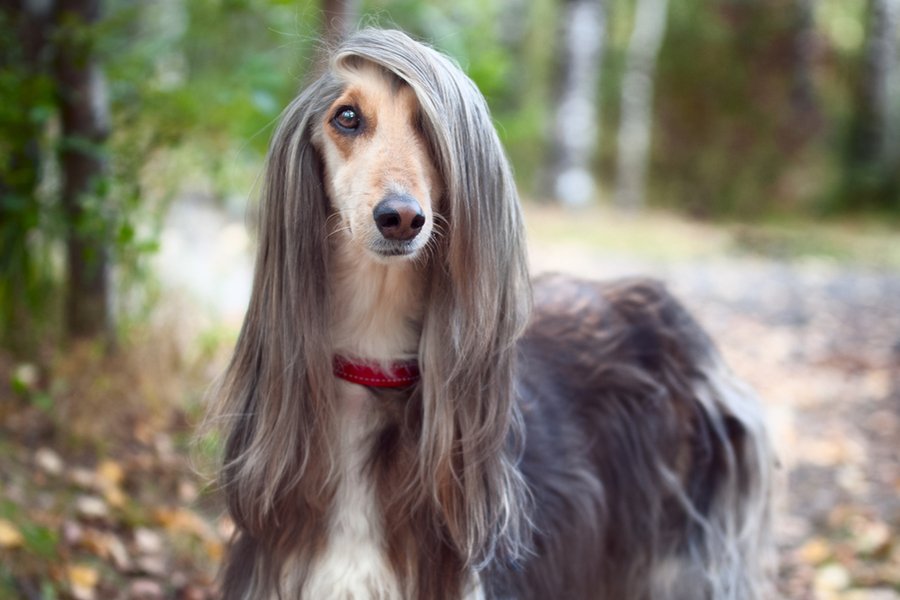
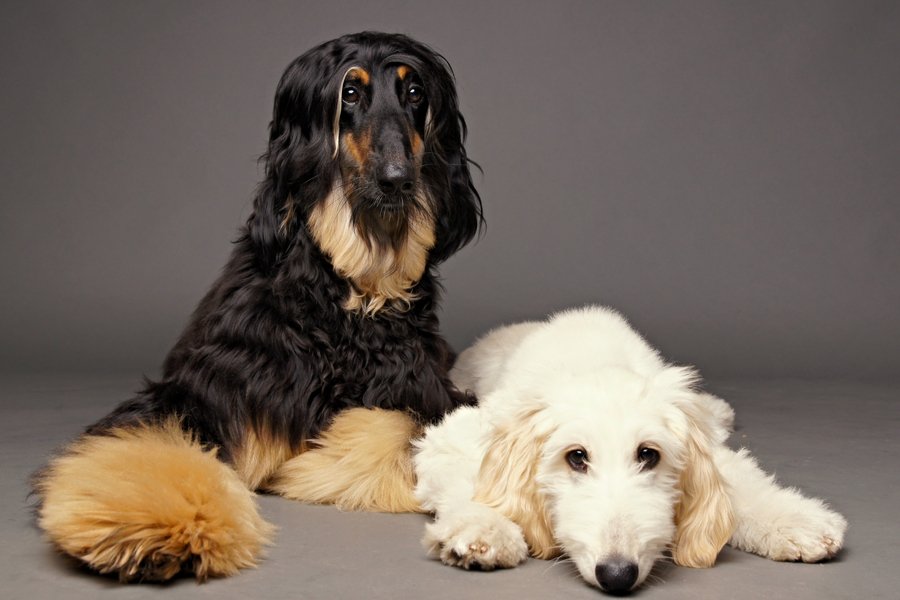
Afghan Hounds are known to be a generally healthy breed. However, like all dog breeds, they are prone to some health conditions. Always purchase a puppy from a licensed and trustworthy breeder to ensure your dog has been well cared for and appropriately weaned. A good breeder will also be able to DNA-check your puppy to determine if any underlying health issues are present.
Not all Afghan hounds will develop a health problem, however, here are some of the more common conditions to watch out for:
These sophisticated and beautiful dogs are usually good around children. However, it’s best to supervise all interactions between a child and an Afghan hound to prevent any injuries. Afghan hounds are sensitive to rough handling and loud noises so they are best suited to homes with older children.
As mentioned earlier, Afghan Hounds are sighthounds. This means that they have an incredibly high prey drive. Due to this, small animals such as rabbits, guinea pigs, or even cats may be seen as “fair game” to them. To curb this, early training and socialization are essential, and all interactions should be supervised just to be safe.
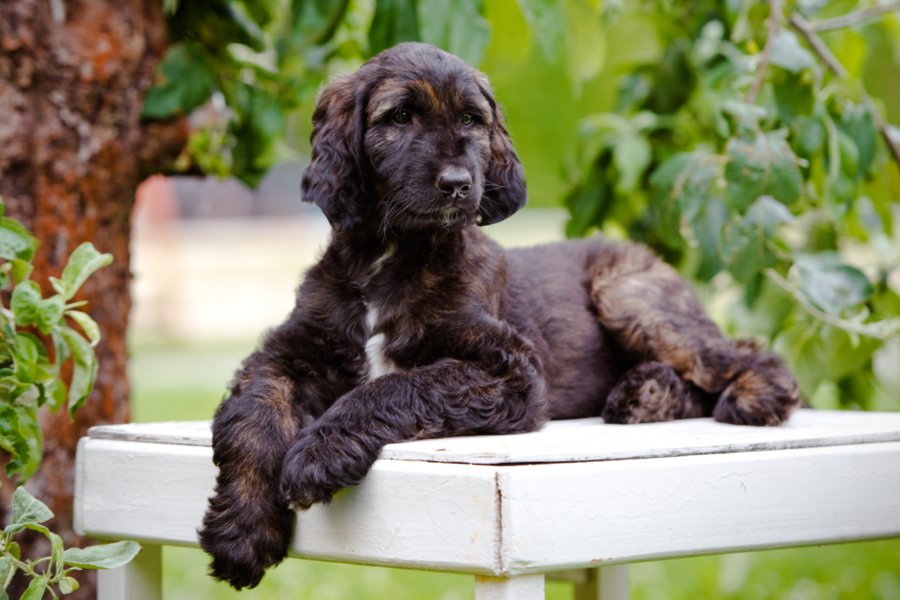

We can connect you with Breeders that are specialized in this particular breed.
See available puppies

Need some advice?
Whether you're a first time pet owner, an experienced pet owner, a new or long-time breeder, or just curious about pets, we've got you covered!

January 17, 2024
What Is The Personality Of Russian Blue Cats?
Russian Blue cats are most known for their distinctive shimmery blue-silver coat and piercing green eyes. However, this breed’s calm and gentle temperament is what makes them shine the most in the feline world.

January 17, 2024
10 Facts About Russian Blue Cat Breed
Russian Blues are one of the most aesthetically stunning cat breeds, with a gorgeous plush silvery coat and vibrant green eyes. However, it’s not only their appearance that is beautiful; their nature is too.

January 17, 2024
How To Choose The Right Cat Breed for You
Cats can make the most fantastic animal companions; they are adorable, friendly, and loving. However, not all felines are created equal. There are many different breeds, of which each has its unique personality traits.
Need some help?
Contact us to speak to our friendly advisor, who will gladly help you find your dream pet!



We are registered in England and Wales under registration number 12568840,
and our registered office is at 58-60 Kensington Church Street, W8 4DB London, England.
© 2023 The Pedigree Paws